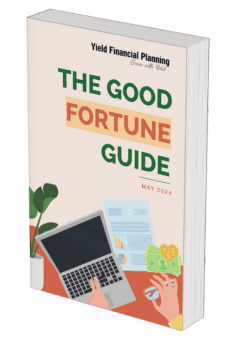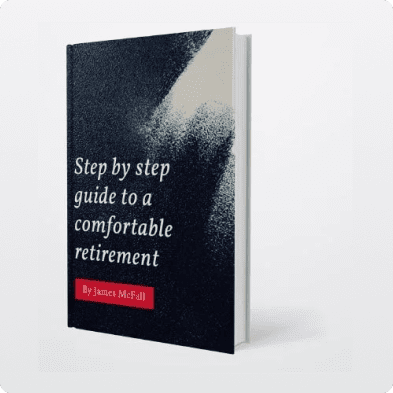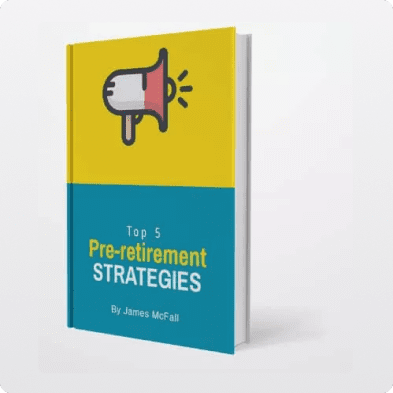About This Innovative Retirement Income Streams Webinar
Join the team at Yield to learn more about the recently introduced Innovative Retirement Income Stream solution and whether it could be of benefit to you. Hosted by James McFall, founding Director of Yield Financial Planning, and Senior Advisor, Onur Serbest. Discover how these innovative solutions can positively impact your eligibility for the Age Pension while ensuring a secure retirement. Learn about the potential benefits, including substantial asset test discounts and increased confidence in retirement planning. Explore real-life case studies demonstrating the significant advantages of utilising these income streams, to reduce the fear of running out in retirement.
Webinar Transcript
0:06
Good morning to everyone that’s joining us for our presentation on innovative retirement income streams.
0:13
Just to introduce ourselves to you before we begin, we’ve got James McFall who’s the founding Director of Yield Financial Planning and my name is Onur Serbest. So today we’ll give you a very brief understanding about who we are, but the topic today is retirement and in particular this new sort of ish solution, innovative retirement income streams and how it can positively impact your eligibility to Age Pension.
0:39
As Onur has already introduced us, my name is James and there’s some information about both of us, but I founded Yield in 2006 and we help our clients grow wealth and retire securely. Typically, we’re helping people that are over 40 years of age. We have our head office in Surrey Hills, but we also have a presence in Sydney. Before we get on to the information side of the presentation, wanna go through a disclaimer just to mention that we’re going to go through. It is general in nature and it doesn’t really take into account your personal circumstances. But if you feel that
1:17
anything that we’re going to present to you could apply to your situation, more than happy to have a further discussion with you. Alright, perfect. Well of course this goes without saying, but we’re going to talk to you about an idea here. It’s ultimately only as good as that unless it’s executed. So, if you are interested in what you hear and would like to discuss further about how it could potentially work for you, then please feel free to reach out.
1:41
So traditional retirement strategies. What this slide does is it really looks at what are some of the key concerns that retirees have and on the other side of the screen or the box, it’s looking at how the government and regulators are responding to some of those concerns. So, to go through the dot points mentioned, and typically we see this with a lot of clients that we help as well. They’ve got a fear of running out. I think that’s probably one of the main things that that we see and but the other thing that is also a concern is, well, how much is really enough? Is what I have at the start of my retirement going to get me through
2:18
you know longevity wise how long is it gonna last? and I think the third point there is you know could I enjoy a better retirement being able to draw higher income without that fear of running out and James if you want to go through the items on the next box. Sure, so basically the way that the government is responding is providing incentives to save for retirement through superannuation tax incentives. They are looking for innovation in the industry, which basically is going to give retirees confidence about what they have and what’s interesting is that at the bottom there, you can see that retirees and majority are actually
2:55
passing one with 90% of their assets still intact. Now we recognise that in that stat, a lot of it’s gonna be linked to the family home, but it’s interesting stat nonetheless and the next one, they’re suggesting that one in every $3 paid out of super will be passed on as part of an estate and that’s due to the increase in value of superannuation and this general tendency for people that feel insecure and to therefore spend less than their retirement than they potentially could afford. Yep. So, in other words, there is an issue where because retirees are scared to spend what they have, they’re holding on to it
3:33
and it just means that they’re not living their best life and you know, that’s something that we like to have an impact and try to change. 100%. So innovative retirement income streams, what are they?
3:44
Effectively they, there’s three stages to it, to an innovative retirement income stream which we’re going to go through. But at the start, it operates very much like a regular superannuation account. There’s no minimum age, there’s full investment choice. So just like the options available in a superannuation fund, you’ve got effectively the same options within IRIS, you’re not locked in
4:06
and how I can like that back to superannuation is, we’ve got options with, you know, who we choose to invest our, superannuation with and we can actually do rollovers, etcetera. Same thing applies to an IRIS to a certain point and we’re gonna delve into that again in a few more slides. But where the innovation really comes in is the potential Age Pension benefits and there’s a very good introduction there, 40% discount on asset test for future Age Pension eligibility. Again, we’ve got some slides that will showcase some case studies.
4:37
Yeah,
4:38
So this basically just illustrates the difference between a traditional superannuation account and an innovative retirement income stream. Or let’s start referring to it as IRIS. Yes, it is a big word.
4:52
So you know we all have superannuation it’s a legislative requirement for your employee to be paying into super and that will grow, what we refer to as accumulation while you’re contributing to it and it is possible then to have what is referred to as a hybrid pension or a transition to retirement. Sometimes you might have heard of it spoken of whereby it forms of a pension until eventually you have a full retirement pension from the form of an allocated pension and that’s the typical and has been the traditional way that superannuation works and
5:29
ultimately for your retirement. The way that IRIS works is, that firstly, as Onur just mentioned on the slide before the superannuation is for all intents and purposes operates the same as has always been the case. It will be invested in line with the way that you choose to invest it and there’s really no limitations on, you know, no more limitations on how you invest than you’re currently used to. There’s this
5:56
alternative hybrid stage referred to as deferred lifetime income and that has its own benefits followed by a lifetime income stream. Now within the, what the column on the right showing is, that basically all the investment options that were available in your normal structure today are also available in IRIS.
6:14
OK, So the three C’s, how can IRIS actually help increase income? So broadly speaking, there’s, uh, it provides more confidence. So, overcoming that fear of running out for retirees, it’s got some Centrelink benefits and the third C, which we refer to as credits is something I guess quite new, and we will take some more time to explain that as we progress throughout this presentation. But yeah, that feature there is effectively it’s really helping with
6:46
point 1 confidence in that, with the mortality credits, the longer you live, the more income you have and
6:53
yeah, I’ll leave it at that for now. Yeah, ultimately this is about addressing the observations that we made and that are documented at the start, which is that people that aren’t feeling confident to spend what they have worked hard for in their life to learn. That’s right and this is essentially all about giving you that confidence.
7:18
OK, so what we’ve got on the screen now are the current Centrelink assessment and payment rates. So, as you can see on your screen for a couple combined, once you as a homeowner to receive the full Age Pension, if your assets are below $451,500, you’d receive the couple full Age Pension, which is detailed below. So that’s around just shy of $43,000. However, once your assets reach above the upper threshold of $1,003,000, you would receive no Age Pension. So, what the IRIS
7:55
strategy and effectively product is helping retirees with is to get a more favourable assessment from a Centrelink perspective, especially when it comes to the asset test. Yeah, and I think it’s worth just taking a backwards step from what Onur’s just said, he’s explained what the assets test is or how it works. But essentially the important thing to understand is that when you approach Centrelink for your eligibility to Age Pension, they’re going to apply two tests. There’s an assets test and an income test. The assets test is what is the most widely, is most widely used,
8:32
but essentially it means that if you have assets in excess of what’s spelt out there and if you’re a homeowner or non-homeowner, then you will either receive, then you will, then it will start to feed into your pension entitlement. If you have greater than the upper limits, then you’ll receive no pension entitlement. The other cover, the other test being income test. The way it works is that it’s looking at your assessable income and if you’re assessable income is in excess of the thresholds, then that will impact you and whichever tests has the biggest impact is the one that Centrelink
9:09
choose, assets test is the one that generally affects people first. So, this IRIS solution has a positive impact on assets test and to a lesser extent can on income tests as well.
9:23
OK, so we’re looking here at the various stages of an IRIS and how different discounts can be applied throughout those 3 stages. So, what we’re starting off there is if you look at the basic discount, firstly, what you would receive is upon entry into IRIS, you receive a 40% discount on the asset test, meaning that 60% of your balance is actually assessed for the asset test. That’s huge. That’s huge. Yep, and then we’re looking at growing your balance. So effectively, if you are in an IRIS product, the longer you’re in it, the actual discount can be increased because there is a feature where regardless of what
10:01
your account might be earning, the deemed percentage that is, your account is deemed to be earning is what is actually applied. So, if that’s taken then throughout the time that you’ve got the IRIS account, whatever the deemed balance is at the end, you then receive a further discount on the end balance. So that’s how that works and then commutations which we’ll get to in a moment
10:23
when you’re in the middle stage of the IRIS, which is the deferred income stage and you’re making commutations from the account, that has an impact of, you know, further enhancing the asset test side of things as well, and everything we just said there makes no sense at all. The bit underneath provides a pretty good summary of the benefit of an asset test reduction. If you’ve reduced your assets by $100,000 in Centrelink size, that equates to enough to get you an Age Pension entitlement in super, doesn’t it? Yeah. We’re running.
10:59
Now we mentioned that it also has some positive impacts on income tests though to a far lesser degree. Look, I think that if we distil it down to what’s referenced there, that $20,000 reduction in assessable income results in a $10,000 extra Age Pension entitlement. It helps you understand how the income test works. We won’t focus on it for the purpose of this presentation. OK. So, we’ve got an example that we’re providing on the screen for you now and what we’re looking at here is a client situation where initial deposit is $300,000 within the super account, the age 50 net
11:36
earnings rate, that we’re taking a look at as an example is 7.08%.
11:42
But what the deeming rate is actually 2.25%. So, if we just have a look at the graphical representation and the blue and the green lines, in a traditional super account with a starting balance there at $300,000. By the time the client gets to age 60-61, you can see there that the blue line represents a balance of $650,000. Now
12:08
what the green line represents on the contrary to that is,
12:12
having starting balance of $300,000 because it’s getting deemed at 2.25% as opposed to the average earnings rate of 7.08%. You can see there that the actual deemed amount by Centrelink is a lot less at $400,000. So, there’s a significant difference there. And as I was mentioning in the earlier slide, you then get a discount on that end balance before you get into effectively the retirement stage when you’re starting to get to that transition to retirement stage. So, Onur just to get this straight, you’re basically saying that $680,000 is my actual balance at age 61? Yep. But the value that
12:50
Centrelink’s gonna deem it as being is $200,000. Exactly. Yeah. Brilliant. So that’s uh, yeah, powerful. So that’s over a 63% discount overall. Yeah. When you take into account the deeming factor. Yeah. One small observation to make is that deeming, rate, while it’s the actual rate at present, it is actually a concessional rate. So, it will likely increase in the near future, but still very likely to be, yeah, favourable to the 7%, that’s for sure.
13:20
Let’s give another example. So, this is Peter and Sue and they’re 55 now and they’re still working. We’ve got six $575,000 in super combined and they’re making $20,000 of contributions per annum. So, they’re just, they’re wanting advice on what government entitlements they may be eligible to and how their retirement’s gonna look. There are a number of things that we’re going to do for Peter and Sue when we speak to them specifically relating to superannuation, we’re going to consider consolidation of their superannuation, maximising their contributions and there’s various different types that we look at that
13:56
are noted up there, we will consider in specie transfer of assets they might own personally into the super environment consider their risk profile are invested appropriately for their risk comfort? How we can look at minimising tax generally. Many government entitlements are eligible the government has a scheme called co-contribution; spouse contribution is the lower income tax offset. So, we’ll look at all of those as potential opportunities for Peter and Sue to grow their superannuation and then depending on their age, well actually both 55 in this case, but we’d also
14:33
consider spousal contribution splitting.
14:36
So based on them just doing what they’re doing. Contributing the $20,000 per annum considering they’re 55 if they retire at 65. This is a representation of how the super might grow with the 7.5% earnings rate that’s assumed in this case and look what we can already see there is they’re in a pretty good position. However, if we remember the upper asset test threshold, it will mean that they’re ineligible for Age Pension because they’re over the cap. So yeah and so if we’re just isolating this situation by only looking at how IRIS could help as opposed to all the other strategies
15:14
that we’re considering as well, this is just isolated to IRIS. But as I just said earlier, if we look at that not eligible for Age Pension, $1.5 million of account-based pension. Now is there anything that we can do to change that? Let’s look at an example where IRIS is actually is utilised. Sure.
15:34
So to begin with, not eligible and by utilising IRIS and getting the 40% discount on the asset test
15:43
actually, if I take a step back. Firstly, we’re looking at the deemed balance because we’re assuming that they’ve actually engaged IRIS early on. Yep. From 55 we’ve met with them. Yep. Said hey look this might be suitable, and we’ve invested in a super fund that is eligible to IRIS. That’s correct. Yeah. And so, the middle line, if you like the grey line, it actually shows what the deemed balance would be from Centrelink. So not what their actual balance would be, but what Centrelink see it as and then when you get to the end of that journey, the orange line at the very end represents
16:18
what, how Centrelink are going to look at their uh. They actually apply an additional 40% discount, exactly on the deemed value. So not the brown line, but the grey line in the middle 40% is applied on that yes. So, in this case, $580,000 is what Centrelink is gonna view their superannuation balance for assets test versus the one and a half million, in fact they have. That’s right. So, we’ve got a bar chart that’s representing a projection on what Peter and Sues, the longevity of their account effectively based on an amount assumed that they’re spending, which is only $5000 in today’s
16:55
dollars. So, without utilising IRIS, you can see there that the Age Pension kicks in a couple years
17:05
after they’re eligible. So, eligibility age for them would be around 68. So, two years they’re not receiving that eligibility, but it does kick in later on. But you can see there that, you know, even
17:17
with their current plan, if you want to call it that. They’re in pretty comfortable position. They’ve got enough money there. However, their account-based pension or their super money effectively would run out at age 90 and then beyond that point they’d be limited to just the Centrelink Age Pension. So that’s I guess the current trajectory, their living on, $85,000 in today’s dollars just utilising their super balance. Just using this super and Centrelink entitlement as it becomes eligible. That’s right, Yeah and this also assumes that they don’t have any other financial assets outside of super. Everything’s basically consolidated in super.
17:54
Interesting. So, then what about if we apply IRIS?
17:58
Yes. So, when we apply IRIS, the first thing that jumps out at me is the eligibility for the Age Pension. You know, the green. That’s a lot more green so they’re eligible for that earlier on, but
18:11
and I know there’s many things to look at in this chart, but I just want to bring everyone’s attention to the fact that
18:17
they’re actually receiving more income overall due to the Age Pension eligibility in the earlier years of retirement, which, you know, I think is quite important because that’s the years in which you’re going to be most active. So, I just wanted to make that observation to begin with. But James did you wanna sort of add to that? I think well, the thing I just wanna point out is that the income itself is no different
18:41
so the income is the same. In both examples they’re drawing $85,000 in today’s dollars or $110,000 in future dollars,
18:50
but what difference here is, is that you can see the longevity is, so whereas in the initial example money ran out, let’s go back to it. Money ran out at basically age 90. That’s right. In this example, you can see that money doesn’t run out till you know the earning capacity for that level of spending is maintained until 93. But then importantly, the light blue line, which actually represents the IRIS pension that’s been invested in this example
19:22
continues into essentially, in perpetuity and ensures that the if you live considerably longer than life expectancy today that you’re actually, you know, very likely to have
19:34
money in excess of Age Pension. Whereas in the alternative, in historical and normal retirees allocated pension they wouldn’t. Yes and I think this example, you can actually see that the dark blue line, which represents the super balance actually lasts longer and the reason for that is because they’ve got more Age Pension coming in, they’re drawing less from their actual super and that has the effect of making it last longer in this example. Yeah, and I might just.
20:03
OK. So we’ve talked to what this is, but perhaps just to explain a little bit further,
20:08
when you invest into an IRIS and so for Peter and Sue that put their money into this IRIS product at 55, they then have the right but not the obligation to invest that money into an IRIS.
20:22
It’s a decision that you would make closer to the time, as to how much or if indeed you invested any at all within an IRIS. Because there are some shortcomings of an IRIS in terms of the way that you’re… Some considerations that everyone needs to be aware of.
20:41
One of which is liquidity. So in this example, what we’ve done is just simply split 50% into a normal retirement allocated pension and 50% into an IRIS, just to demonstrate the benefit to longevity.
20:56
But when it comes to it or you or for any, like it always should be a very personalised discussion initially. But then also balance between how much you actually put into pension mode utilising the IRIS and how much you retain in the normal traditional allocated pension. Because the one of the advantages of the traditional allocated pension is its more flexible, you can withdraw sort of any amount you like tax free. So I think that the whereas IRIS has limitations. So, and that’s where personalisation,
21:33
you know, comes into it. Yeah, that’s where we highly recommend you speak to an advisor just to
21:40
look at the benefit to your unique situation. The examples we are going through are just again, very, very general and in a lot of cases we are assuming a 50% split and in reality, I mean based on the work that we’ve been doing, it seems like the sweet split or the sweet spot is, about that 50/50. But again, very general, it might be better off to have 30% or 60% and that will all be determined on your personal objectives. Yeah, so this is another example to share. Maybe you wanna talk to this one. Yeah, no problem. So just Rob and Amanda case study that we’re doing here and age
22:17
67 they’ve got a balance of $500,000 each. They are homeowners, they’ve got $50,000 of lifestyle assets and they’re actually retired. Their goals are to maximise their income and hopefully never run out of money, which is well, yeah, yeah. Ok, now to explain this, chart, we’re looking at scenario one. It represents a minimum drawdown
22:44
from their super effectively and IRIS is not utilised here. So we’re looking at an income of $50,000. What we can see there is that’s what they’ve said that they want. They’ve come to us and said.
22:56
Yeah, OK, I’d be happy with $50,000. Yeah, it looks like this sort of thinking of I think I’ve got the fear of running out at the back of their mind as well. But, in any case $50,000, what this chart shows is that the situation looks OK. I mean the blue line represents their account-based pension or their super money and then a bit of Age Pension kicks in down the line as well. Historically with this we would have been I mean, well for one thing, this is gonna give confidence around spending the $50,000, it’s certainly we were, you know, speaking to these people, Rob and Amanda we’d be sort of encouraging them to potentially look at spending a little more if that’s gonna add value to their life
23:32
and or just look at any sort of lump sum expenses that they might be considering, like upgrading the car and stuff that also might come into this or going on holidays. That’s right and just one more thing to highlight here is there’s no Age Pension eligibility for the first five years of retirement. Yeah, that’s right. That’s one key thing to take note of before we get into the next slide, which is scenario 2.
23:54
So this is looking at utilising again the 50/50 split half of the super balance in IRIS, half in a traditional super account. What that does effectively is reduce their assessable assets. So it falls from a million to $800,000 with that 40% discount applied on the, on IRIS
24:12
and what we’re looking at here is as you can see their income is increased by 46% to $73,000, which is you know quite a significant jump and that’s when we’re now getting into this territory of more of a I would say more of a comfortable retirement lifestyle. But if you look at the green bar, they’re actually eligible for Centrelink Age Pension from the very start. Yeah, that’s a significant difference and when you apply that across the time frame that we’re looking at on this graph for the first five years, it’s additional Age Pension of $75,000. Versus having no Age Pension for the first five years, so effectively it’s a
24:49
75% benefit in the five years. Yeah and so basically when you’re looking at this chart, you can look like green as being, you know, paid to you by the government, so therefore not eating into your retirement savings and to be getting $75,000. That’s right. That’s giving you confidence in your retirement.
25:09
Diversifying your income as well so it’s actually not market linked Centrelink is more it’s governed yeah. So you know for some people that might be important as well depending on how you are as in are you a conservative person? So a lot of people like that, that it’s not market linked. Yeah and then if you see the other two, the light blue and the dark blue, the dark blue being the traditional allocated pension, completely flexible, the light blue being the IRIS and
25:32
like in the previous example where it was just all the allocated pension and aged pension, it lasts the distance. But we’re drawing a hell of a lot more and you can see that in what the light blue represents is some greater degree of confidence that your money is going to be continuing to provide this income kind of no matter how old, how long you live. Scenario 3
25:59
That’s right. So this is just, it’s an example to show you, um, you know, if IRIS was used
26:06
just really optimised, optimising as much as possible. So if we go through the facts here, it’s
26:12
following on from example two, it’s still a 50/50 split. But you can see there that
26:17
with this example
26:19
in that deferred income stage, there’s been some drawdowns happening and what that does is it actually accelerates the rate in which your assets are reduced for the asset test. So in this example, if you look at the first five years, they’re actually getting additional Age Pension of $89,000 as opposed to the $75,000 on the previous slide. So there’s a benefit there, but their income has actually increased there to $90,000. So that’s actually an 80% increase compared to the $50,000 that we were initially looking at without utilising IRIS at all. Now this just enhances the situation further from Slide 2.
26:56
It does and I think that in the end this is about you having confidence to spend and enjoy the money that you’ve worked hard to build. So just always keeping that in mind. Yes. So what are the advantages? Well, you get the asset test discount that we’ve just been discussing and that’s obviously you can hopefully see from those examples that it’s substantial. It allows you to plan forward with greater confidence because we can sort of model this with a fair degree of clarity.
27:25
You don’t need to change your investment philosophy. The various, the providers that have IRIS solutions are going to allow you to invest in the same way that their traditional investors would and you’re locking in your assets test early. So any future changes, well, it’s not guaranteed, but historically they have been grandfathered. So in other words, in our experience when different innovative solutions have been introduced to the market but then later repealed those that were in them were had grandfathered benefits
28:02
or in other words, were able or allowed to maintain the benefit, that they were receiving. That’s right. That’s not guaranteed, but it’s the way that we’ve identified and notice that it’s worked in the past on several occasions. Legislation is always, you know, there’s always changes being applied. Yeah. So I guess what we’re trying to say there is if you take advantage of the current rulings, although we can’t say 100% that you’re gonna be locked in for life. We’re saying that based on previous examples of different types of strategies that have different benefits attached, those individuals were able to continue them on.
28:35
Things to consider. So what this is looking at is again, IRIS is not going to be suitable for everyone and here’s some examples of things for you to consider if you’ve got a low asset balance. So if your overall assets are gonna be below the asset, the lower asset test threshold to begin with, then perhaps you know, there’s gonna be no benefit for you. But if you’re over that and again, there is gonna be what we refer to as the sweet spot or individuals that it is going to be suitable for and we can go over those examples with you later on. We think that there is a lot, there are a lot of people that can benefit from this. But again, there’s also gonna be
29:12
those individuals that would never have benefited from it overall, because their asset balance is low to begin with or sort of so substantial that the trade-off wouldn’t be worth it. Exactly, exactly. Now there’s a cost element there and we don’t, I mean, it’s not a huge impact. It just means that the product cost could be 0.1% higher than the traditional side of super. But in exchange for that, you know, there’s the multiple benefits that you have through the asset test could far outweigh that depending on your situation. The income drawdowns, as James was mentioning earlier, there are restrictions in terms of what you can withdraw
29:49
but there are alternative strategies that you could utilise to make that not so much of an issue. The estate benefit which James touched on earlier as well and again, just wanna highlight that the above highlights, or the above considerations. They may or may not be applicable to your situation. So we do highly recommend you seek
30:10
personal advice before. Yeah, I think that’s fair to say. Yeah, for sure. So where’s to next? We hope you’ve seen value in the presentation we just provided. Hopefully that gives you some understanding of what IRIS is and how it potentially could be valuable to you. We’re available, we’re a team of five advisors and team of 15 so we’re well versed in this as a solution amongst many other retirement opportunities and wealth building opportunities. So we’d be happy to meet with you. Please feel free to reach out. We would also ask that you provide your feedback on this event. So we will be sending out a feedback form
30:48
and thank you for your attendance. Yeah. If you’re wanting to know more about Yield, jump onto our website, which is yieldfinancialplanning.com.au.
30:57
Thank you.
30:58
So just leave it there. Is there any questions? Anuresha, if you could just share those with us if there are any questions from the room.
31:12
Doesn’t look like there is.
31:15
If there is any follow up questions, please feel free to just reach out to us directly. But otherwise, thank you again for your attendance and enjoy the rest of the day.
















